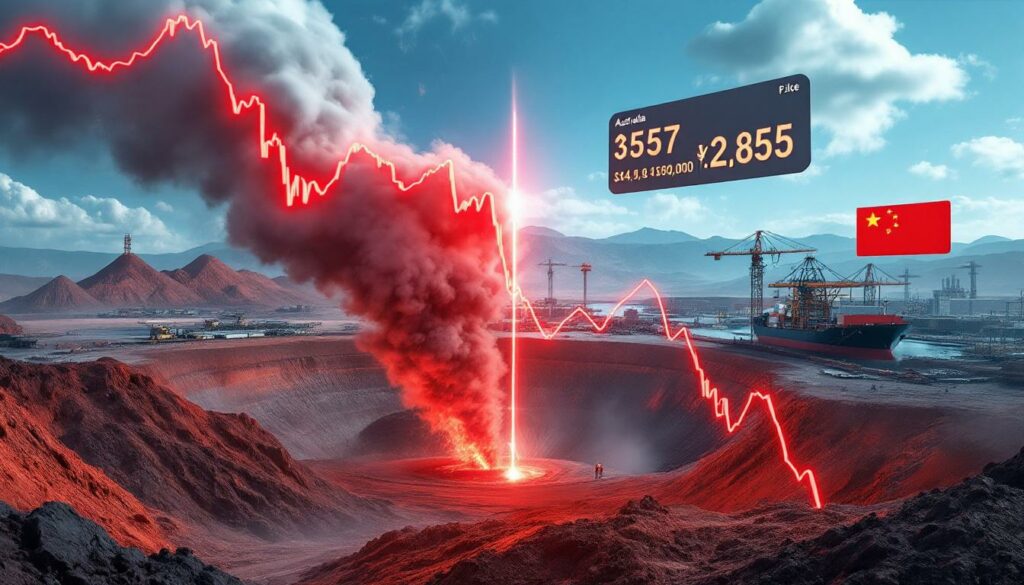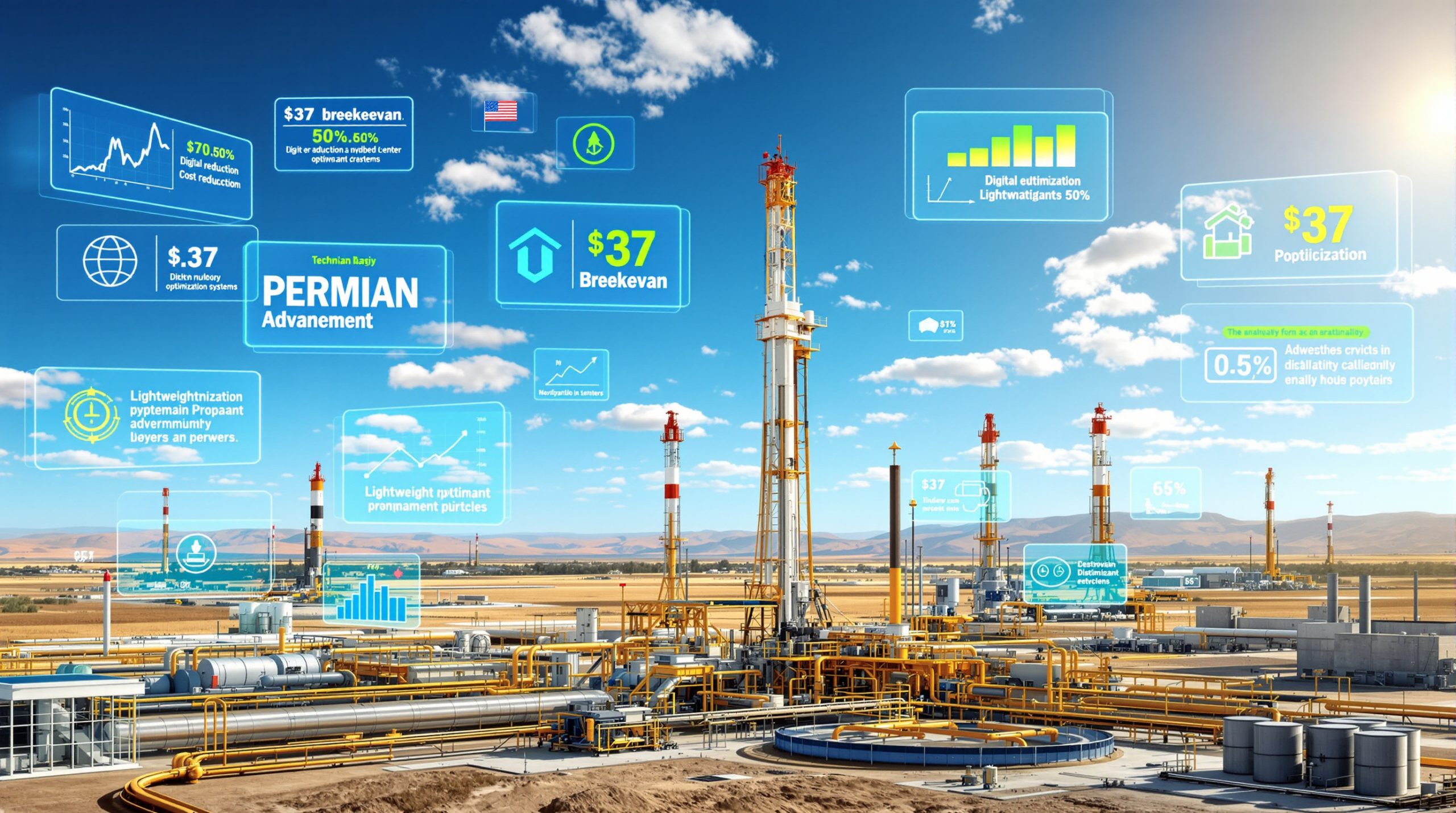Understanding the Iron Ore Price Slump: Causes, Impacts, and Future Outlook
The iron ore market has experienced significant downward pressure in recent months, with prices retreating substantially from earlier highs. This comprehensive analysis examines the multifaceted factors driving this iron ore price slump, its impacts across various stakeholders, and provides insights into potential future scenarios.
What's Behind the Recent Iron Ore Price Decline?
Market Fundamentals Driving the Downturn
China's property sector challenges have emerged as a primary catalyst for weakening iron ore demand. With residential construction accounting for approximately 30% of China's steel consumption, the ongoing liquidity crisis among major developers has dramatically reduced new project starts. Recent data shows property investment has contracted by 16.8% year-on-year, creating a ripple effect through steel demand chains.
Simultaneously, major miners have maintained robust production levels despite softening demand signals. The "Big Four" producers (Rio Tinto, BHP, Vale, and Fortescue) have collectively increased output by 3.2% compared to the previous year, creating persistent surplus-driven price decline. Furthermore, broader macroeconomic headwinds, including tightening monetary policies and sluggish global growth forecasts, have further dampened industrial activity.
Manufacturing PMI readings across key economies have remained in contractionary territory for consecutive months, weighing on steel-intensive sectors. Recent iron ore price trends indicate that seasonal factors have amplified price volatility, with traditional construction slowdowns during winter months in China's northern regions coinciding with pre-Lunar New Year industrial deceleration.
"What we're witnessing isn't merely cyclical—it's a structural realignment of China's economy away from property-driven growth. This transition creates significant near-term pain for iron ore markets, but potentially healthier long-term fundamentals," notes commodity market analyst Zhang Wei.
Key Price Metrics and Recent Performance
Iron ore prices have retreated to approximately $85-90 per ton (62% Fe CFR China), representing a substantial 40% decline from peak levels above $140 seen earlier in the year. This positions current prices below the 5-year average of approximately $105 per ton, according to recent market analysis.
Week-over-week declines have averaged 3.8% over the past month, with particularly sharp corrections following Chinese economic data releases. Month-over-month, the decline has accelerated to 22%, marking one of the steepest monthly drops since 2018.
Price differentials between premium and lower-grade ores have widened significantly, with high-grade 65% Fe commanding a premium of nearly $24 per ton over the benchmark 62% grade, while 58% Fe trades at a discount of approximately $18 per ton. This quality spread expansion reflects steelmakers' focus on efficiency and environmental compliance during margin compression periods.
Compared to other bulk commodities, iron ore's decline has been more pronounced than coking coal (-25%) but less severe than nickel (-45%), highlighting the unique demand dynamics affecting each market segment.
How Are Major Mining Companies Responding?
Impact on ASX-Listed Iron Ore Producers
BHP Group shares have demonstrated relative resilience, declining 18% from recent peaks despite their substantial iron ore exposure. The company's diversified portfolio including copper and potash has provided partial insulation against iron ore-specific headwinds. BHP's strong balance sheet, with net debt at historic lows of $4.7 billion, positions it to weather extended market weakness.
Fortescue Metals Group, with its more concentrated iron ore focus, has experienced a steeper 27% share price correction. The company's strategic pivot toward green energy initiatives through Fortescue Future Industries represents a deliberate diversification strategy, though iron ore remains its primary earnings driver.
Rio Tinto shares have retreated 23% amid the sector downturn. The company's production costs of approximately $18-20 per ton at its Pilbara operations provide substantial margin buffer even at current price levels, though the market remains concerned about its project development pipeline and China exposure.
Mid-tier producers like Mineral Resources and Champion Iron have faced more significant pressure, with share price declines exceeding 35% as their narrower operational focus and typically higher cost structures amplify market sensitivity. For a more detailed analysis of the sector, iron ore miner insights provide valuable perspective on company-specific responses.
Production Strategy Adjustments
Despite price pressures, major producers have largely maintained production volumes, reflecting the strategic importance of preserving market share and the high fixed-cost nature of large-scale mining operations. Cost metrics reveal why: with all-in sustaining costs generally between $30-45 per ton among major producers, operations remain cash-positive even at current prices.
Cost-cutting initiatives have intensified sector-wide, with particular focus on discretionary spending, contractor renegotiations, and operational efficiency improvements. Several producers have announced 15-20% reductions in non-essential expenditures.
Capital expenditure plans have seen significant revisions, with the collective announced reduction in growth spending across major producers totaling approximately $6.8 billion for the upcoming fiscal year. Project timelines for expansions have been extended by an average of 12-18 months.
Inventory management strategies have shifted toward leaner operations, with producers reducing port stockpiles by approximately 22% compared to peak levels to minimize carrying costs during the price downturn.
What Does This Mean for Australia's Economy?
Economic Implications of Lower Iron Ore Prices
Australia's trade balance faces substantial headwinds, with iron ore accounting for approximately 20% of total export value. Each $10 per ton decline in the iron ore price translates to approximately $6.5 billion in reduced annual export earnings, as highlighted in ABC's recent analysis.
Tax revenue implications are significant, particularly for Western Australia's state budget and federal coffers. Royalty collections could decline by an estimated $2.8 billion annually at current price levels compared to previous forecasts, potentially affecting budget balances.
Regional economic effects are most pronounced in Western Australia's Pilbara region and other mining hubs, where iron ore operations support approximately 45,000 direct jobs and over 120,000 indirect positions. While major job cuts have been limited to date, contract and service provider positions face growing uncertainty.
The Australian dollar has exhibited clear correlation with iron ore price movements, weakening approximately 6% against the US dollar during the recent price decline phase, which provides a partial natural hedge for exporters through lower domestic-currency costs.
Historical Context and Comparison
The current slump appears less severe than the 2014-2015 correction, when prices declined by nearly 70% from peak to trough. That earlier downturn was characterized by more significant supply expansion coinciding with demand deterioration.
Recovery patterns from previous downturns suggest consolidation periods typically lasting 8-14 months before sustainable price recoveries materialize. Current market indicators suggest we may be midway through such a consolidation phase.
Structural factors, including China's economic rebalancing away from property-led growth, differentiate the current market from purely cyclical corrections of the past. Environmental policy shifts affecting steel production capacity represent another structural evolution.
A key lesson from previous price correction periods has been the importance of balance sheet strength in determining which producers emerge strengthened from downturns. Companies that maintained financial discipline during boom periods have demonstrated greater resilience during subsequent contractions.
What's Happening in China's Steel Industry?
Chinese Demand Dynamics
Steel production in China has contracted by approximately 4.6% year-on-year, with monthly output consistently below 80 million tonnes compared to peaks above 94 million tonnes in previous years. Mill utilization rates have declined to approximately 77%, well below the 85-90% levels considered optimal for profitability.
The property sector crisis continues to exert significant downward pressure on construction steel demand. With an estimated 50 million empty apartments across China and significant developer inventory overhang, the structural impediments to recovery appear substantial.
Infrastructure investment, traditionally a counter-cyclical policy lever, has increased by 7.3% year-to-date but has proven insufficient to offset property weakness. Recent policy announcements suggest targeted rather than broad-based stimulus measures, likely insufficient to drive substantial steel demand increases.
Environmental policies, particularly emissions reduction targets and winter production restrictions, have evolved from temporary to structural factors affecting the steel industry. These measures have reduced peak production capacity by an estimated 120-150 million tonnes annually compared to theoretical maximum output.
Supply Chain Disruptions
Port congestion issues that plagued global shipping during the pandemic have largely normalized, with waiting times at major Chinese ports declining from peaks of 7-9 days to current levels of 2-3 days. This logistical improvement has ironically contributed to price pressure by ensuring more consistent ore availability.
Iron ore inventories at Chinese ports have climbed to approximately 140 million tonnes, representing nearly 40 days of consumption at current rates—well above the 25-30 day levels considered balanced. This inventory overhang creates a psychological ceiling on prices until stocks normalize.
Logistics challenges have shifted from shipping to internal distribution, with trucking and rail capacity constraints occasionally creating localized shortages despite ample port inventories. Recent flooding in key steel-producing regions temporarily disrupted approximately 15% of domestic logistics capacity.
Chinese steelmakers have increased utilization of domestic ore sources despite their lower quality (average 30% Fe content versus 62% for imports), with domestic production increasing 8.2% year-on-year. This shift, while quality-compromised, represents a strategic hedge against import price volatility.
How Are Global Factors Influencing Iron Ore Markets?
Broader Commodity Market Trends
Iron ore price movements have demonstrated strong correlation (0.74) with broader industrial metals indices, suggesting common macroeconomic drivers rather than isolated market factors. Copper, often considered a barometer for global economic health, has exhibited similar, though less severe, price weakness.
Inflation concerns have paradoxically pressured commodity investments, as central bank tightening to combat inflation has raised fears of demand destruction outweighing any inflation-hedge benefits. Investment fund positioning data shows net speculative length in iron ore futures has declined by over 60% from peak levels.
Dollar strength has created additional headwinds for dollar-denominated commodities like iron ore, with the DXY index gaining approximately 7% during the price decline period. This currency effect amplifies price pressure in dollar terms.
Geopolitical tensions, particularly between Australia and China, have receded as a market factor following diplomatic normalization efforts. However, Brazil's production recovery from earlier disruptions has increased supply diversity for Chinese buyers, reducing Australia's market leverage.
Emerging Market Considerations
India's growing influence in global steel markets has introduced new dynamics, with production increasing 8.5% year-on-year to approximately 120 million tonnes. As both a significant steel producer and potential iron ore exporter, India's policy decisions increasingly influence global market balances.
Southeast Asian development continues to provide marginal demand growth, with Vietnam, Indonesia, and Malaysia collectively increasing steel consumption by approximately 5.3% annually. However, their combined consumption of approximately 80 million tonnes remains modest compared to China's 900+ million tonnes.
New iron ore supply sources are advancing development, particularly in Africa where several major projects in Guinea, Cameroon, and the Republic of Congo have progressed despite financing challenges. These projects potentially represent 100+ million tonnes of annual capacity by 2030, though development timelines remain uncertain.
Shifting trade relationships have evolved, with China diversifying supply sources while maintaining Australia as its primary supplier due to quality, reliability, and logistical advantages. Brazilian market share has recovered from earlier tailings dam disaster-related constraints.
What's the Outlook for Iron Ore Prices?
Short-Term Price Projections
Analyst consensus suggests iron ore prices will likely trade within a $75-95 per ton range through the remainder of the year, with median forecasts of $85 per ton. This represents continued price pressure but suggests the most severe declines may have occurred. The latest iron ore price forecast indicates significant challenges ahead for producers.
Technical indicators show significant support around $80-82 per ton, representing previous consolidation levels from late 2021. Resistance has formed near $95-97, creating a defined trading range that aligns with fundamental perspectives.
Seasonal factors typically support iron ore prices in late Q3/early Q4 as construction activity accelerates post-summer and pre-winter in China. However, this seasonal pattern may be muted given the structural property sector challenges.
Potential catalysts for price stabilization include Chinese policy support for the property sector, especially regarding project completions rather than new starts, and any significant production curtailments announced by major miners.
"The iron ore market's underlying dynamics suggest prices will likely normalize between $80-90 per ton in the medium term. The era of sustained $100+ prices increasingly appears contingent on significant supply disruptions rather than demand strength," explains resources analyst Michael Chen.
Long-Term Market Fundamentals
Structural changes in global steel production include the accelerating adoption of electric arc furnace (EAF) technology, which relies primarily on scrap rather than iron ore. Current projections suggest EAF production will grow from approximately 28% of global steel output to 35-40% by 2030, creating a structural headwind for iron ore demand.
Decarbonization trends present both challenges and opportunities. While traditional blast furnace production faces carbon intensity scrutiny, high-grade direct reduction iron ore products command growing premiums for green steel applications. This divergence creates strategic opportunities for miners capable of producing premium grades.
Technological innovations in steelmaking, including hydrogen-based direct reduction and carbon capture implementation, may reshape the competitive landscape for iron ore grades and quality specifications. Early commercial installations suggest these technologies favor high-grade, low-impurity ores.
Resource depletion and grade decline at established mining operations continue to influence market fundamentals. The largest iron ore mines face declining average ore grades of approximately 0.1-0.2% annually, requiring either increased processing intensity or expanded mining volumes to maintain output quality.
How Should Investors Navigate the Iron Ore Sector?
Investment Strategies During Price Downturns
Defensive positioning strategies currently favored by institutional investors include overweighting diversified miners with lower relative iron ore exposure (e.g., BHP with its copper and potash assets) versus pure-play producers. Portfolio allocations have shifted approximately 35% away from pure-play exposures during the recent downturn.
Contrarian opportunities may emerge as valuations compress, particularly among high-quality mid-tier producers whose share prices have declined more severely than fundamentals warrant. Historical analysis suggests acquiring sector exposure when price-to-book ratios decline below 1.3x has generally delivered superior long-term returns.
Dividend sustainability varies significantly across the sector. Major producers maintain substantial dividend coverage even at current prices, with average payout ratios expected to remain above 50% despite price pressures. However, some previously high-yielding mid-tier producers have already announced dividend reductions averaging 40-60%.
Valuation metrics indicate the sector is trading at an average EV/EBITDA multiple of approximately 4.2x, representing a 15-20% discount to historical averages. This compressed valuation provides some margin of safety, though earnings forecasts continue to face downward revision pressure.
Risk Management Considerations
Hedging strategies among producers remain limited, with typically less than 15% of production hedged among major miners. However, some mid-tier producers have increased hedging to approximately 25-30% of output to ensure operational cash flow stability.
Volatility expectations have increased significantly, with implied volatility in iron ore options markets approximately 40% above long-term averages. This volatility expansion creates opportunities for options-based strategies that can monetize uncertainty.
Scenario analysis conducted by investment banks suggests share price impacts from sustained sub-$75 iron ore prices could reach 30-45% from current levels for pure-play producers, while more diversified miners face 15-25% downside in severe cases.
Exposure management approaches increasingly favor indirect investments through broader materials ETFs rather than direct producer exposure, allowing participation in any recovery while limiting concentration risk. Fund flow data shows approximately $1.8 billion has migrated from direct producer investments to broader materials sector instruments.
How Does This Slump Compare to Historical Cycles?
Historical Price Analysis
The iron ore market has experienced three major price cycles over the past two decades: the 2008-2009 global financial crisis downturn, the 2014-2015 supply-driven collapse, and the current correction. Peak-to-trough price declines reached 62%, 71%, and 40% (current) respectively.
Previous downturns lasted approximately 14 months (2008-2009) and 23 months (2014-2015) before sustained recoveries materialized. The current decline has persisted for approximately 8 months, suggesting potential further consolidation before stabilization if historical patterns prevail.
Price amplitude in the current correction has been less severe than previous cycles, potentially reflecting more balanced market fundamentals or indicating further adjustment may occur. The 2014-2015 decline ultimately reached marginal production cost levels before finding support.
Structural market changes since previous cycles include significantly improved producer balance sheets, with net debt among major miners approximately 70
Ready to Stay Ahead of the Next Major ASX Mining Discovery?
Gain instant notifications on significant mineral discoveries before the market reacts, powered by Discovery Alert's proprietary Discovery IQ model. Explore historic mining discoveries and their impressive returns by visiting the dedicated discoveries page and position yourself for success with a 30-day free trial.




